- Author Jason Gerald [email protected].
- Public 2023-12-16 10:50.
- Last modified 2025-01-23 12:04.
After the holidays, giving birth, or quitting regular exercise, you may have gained weight, and you definitely need to lose it. Determining the number of calories to consume in a day and tracking calorie intake is an effective way to lose weight. Counting calories is not a diet, but by counting calories, you can consume calories according to your height, weight and physical activity.
Step
Method 1 of 2: Calculating Basal Metabolic Rate and Daily Calorie Intake

Step 1. Seek permission from a healthcare professional before starting any weight loss or exercise plan
Losing weight is important, but your health is even more important. Most people can safely lose 1/2 to 1kg per week.

Step 2. Use the online basal metabolic rate (BMR) counter to find out the secret to weight loss
BMR is the number of calories you consume while doing nothing.
The Mayo Clinic and other health sites have calorie calculators, which you can use to determine how many calories you need per day to maintain your weight. Enter variables such as weight, height, age, gender, and exercise frequency to display the daily calorie count on the screen
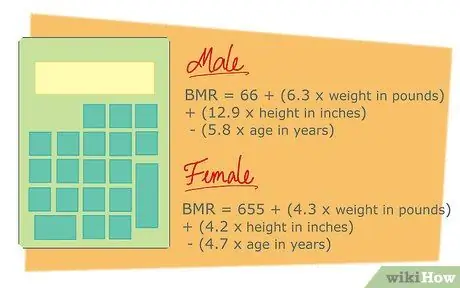
Step 3. If you don't want to use the online BMR converter, do the calculations yourself using the following formula
Keep in mind that the BMR formula for men and women is different.
-
For woman:
655 + (4.3 x weight in pounds) + (4.2 x height in inches) - (4.7 x age in years)
-
For men:
66 + (6.3 x weight in pounds) + (12.9 x height in inches) - (5.8 x age in years)
- You will get the calculation result, which is the number of calories burned when you do nothing.
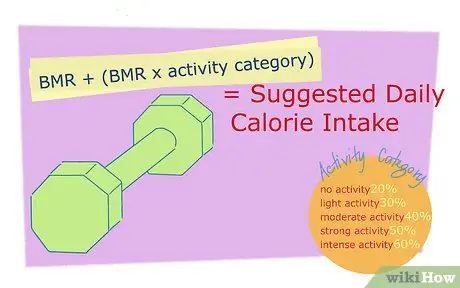
Step 4. Calculate daily activities in BMR to calculate the number of calories you can consume in a day to maintain your current weight
Take the BMR number, multiply it by the number below, then add it to the BMR to find out the number of calories you can consume in a day to keep your weight. The number of calories is the recommended amount of calorie intake.
- If you are sedentary, multiply your BMR by 20% (0, 2 instead of 20!).
- If your activity is light, multiply your BMR by 30%.
- If your activity is moderate, multiply your BMR by 40%.
- If your activity is strenuous, multiply your BMR by 50%.
- If your activity is intense, multiply your BMR by 60%.
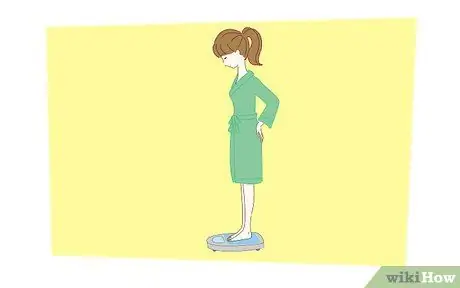
Step 5. Know the causes of weight gain and loss
When you consume calories above the recommended number of calories, you will gain weight, and vice versa. One pound of body weight equals 3,500 calories, so if you eat 3,500 calories more than you burn in a day, you will gain a pound, and vice versa.
For example, if your BMR is 1,790 and you exercise three times a week, add 1,790 x 0.4 = 716 to 1,790, so you can eat 2,506 calories a day without worrying about gaining weight. Extra calories above 2,506 will be added weight
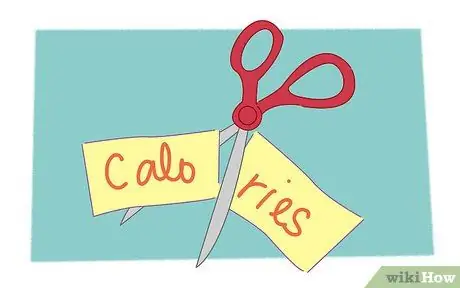
Step 6. Cut 500 calories a day to lose 1 pound a week
One pound of body weight equals 3,500 calories, so 500 calories a day when combined will be 3,500 calories a week. Having a daily calorie goal will make it easier for you to choose food ingredients.
If your recommended calorie count is around 2,500, try eating 2,000 calories a day to help you lose a pound per week
Method 2 of 2: Learning How to Count Calories
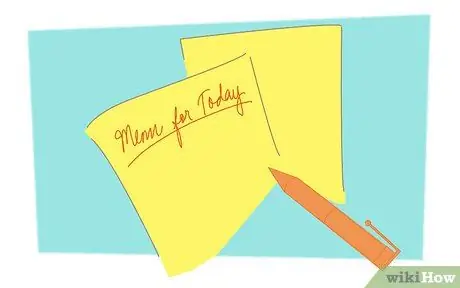
Step 1. Plan meals with the right number of calories
In a busy life, eating whatever's in the fridge or buying food that looks delicious is appealing. However, resist the urge, and plan the food you will eat each day. To keep track of the plan, shop for a few days or a week.
At first, this step will be a little difficult to do, because you do not know the calories contained in each type of food. However, after a few weeks of training, you should be able to estimate the number of calories in each meal

Step 2. Choose healthy foods
Healthy food may be delicious, but generally lower in calories, so you can eat more. On the other hand, unhealthy foods usually have a lot of calories. The large carbonated drink at McDonald's has 300 calories, the same as the cheeseburger. The number of calories is very large for the size of the drink. When choosing food, choose:
- Low-fat protein (chicken breast, fish, tofu), instead of red meat and fat.
- Fresh and colorful fruits and vegetables instead of dried fruits and vegetables.
- Whole wheat (brown rice, whole wheat bread), instead of processed wheat (rice/white rice).
- Omega 3 fatty acids, such as flaxseed, cod liver oil, and salmon.
- Nuts, seeds, and oats instead of snacks and sweets.
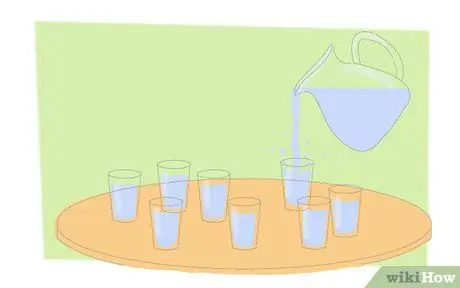
Step 3. Drink plenty of water, especially before eating
Water is very important for your health. In addition, water takes up space in your stomach, so you can feel full longer. Water also contains no calories, so every time you drink, the calories in the body will be reduced (the body spends calories to digest food and drinks). If you really want to lose weight, drink water, and avoid sugary drinks such as energy drinks, sodas, or fruit juices. You can also drink plain green tea.

Step 4. Check the calories in each type of food before buying, whether it's bread, snacks, or frozen meals
Find the calories per serving of each food, then choose the food with the lowest calories per serving.
- Go shopping with your parents if you are a teenager. In addition to getting closer to your parents, this activity also allows you to choose healthy and nutritious foods for you, with information on nutritional values that you understand.
- Pay attention to the serving size. If the wrapper states that the serving size is for 4 people, then divide the package size by 4. One portion equals one serving.

Step 5. Find calorie information on nutrition sites
Not all foods display calorie counts, but there are sites that show calories from almost any food. However, if you're checking the calorie count for 100g of fish, make sure you're only eating 100g of fish.
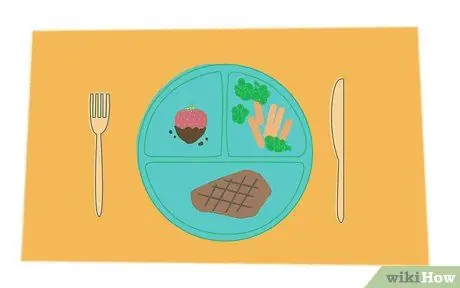
Step 6. Use a spoon and measuring cup to measure out the correct serving size, and make sure that you actually add the right size of spices or food additives

Step 7. Record all food and beverage intake, along with the number of calories per food/drink
Use tables on your computer to make note-taking easier. Write down the food/drinks you eat (even on scraps of paper), then copy the information into a table at the end of the day and count the number of calories you consume. Apart from motivating and helping you stay focused, keeping track of your calorie count also allows you to see the calories from the foods/drinks you eat/drink frequently.
With a food journal, it will be easier for you to remember the healthy and delicious foods you recently enjoyed. For example, you'll be able to remember that grilled asparagus with quinoa is delicious if you take notes

Step 8. Think that keeping track of calories will become easier over time
At first, because you don't know the calorie count for a particular food, counting calories takes time and information seeking, so the process can be a pain in the ass. However, once you know the calorie count of various foods and drinks, the recording process will be much easier.
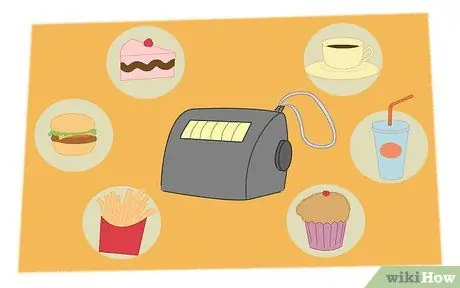
Step 9. Use a counter
You can buy counters on the internet cheaply. Add one count each time you eat something (one count per 10 calories works best).
You can also use an app on your smartphone that looks up your calorie count, and calculates the calories you need to consume each day to lose weight
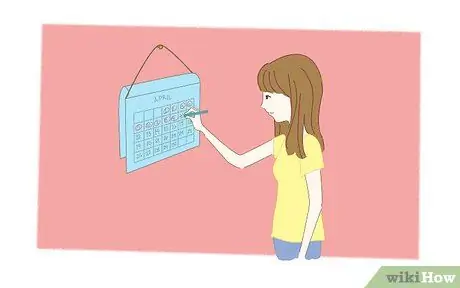
Step 10. Be patient, don't expect to lose weight overnight
Often times, good intentions to lose weight are defeated by impatience. In fact, if you are patient, you can start enjoying the results. So, stick to your planned weight loss program, believe it, and be patient, for your sake.
Tips
- If your recipe doesn't show the calorie count, you can estimate the calories by looking at the packaging for each ingredient.
- Find low-calorie recipes online, and look up nutritional information at your favorite restaurants so you know what to order.
Warning
- When comparing the calories in the packages of two different products, make sure the serving sizes are the same.
- Don't ignore the calories in drinks. Drink water or low-calorie drinks, so you don't spend your calorie allowance on something that isn't filling.






